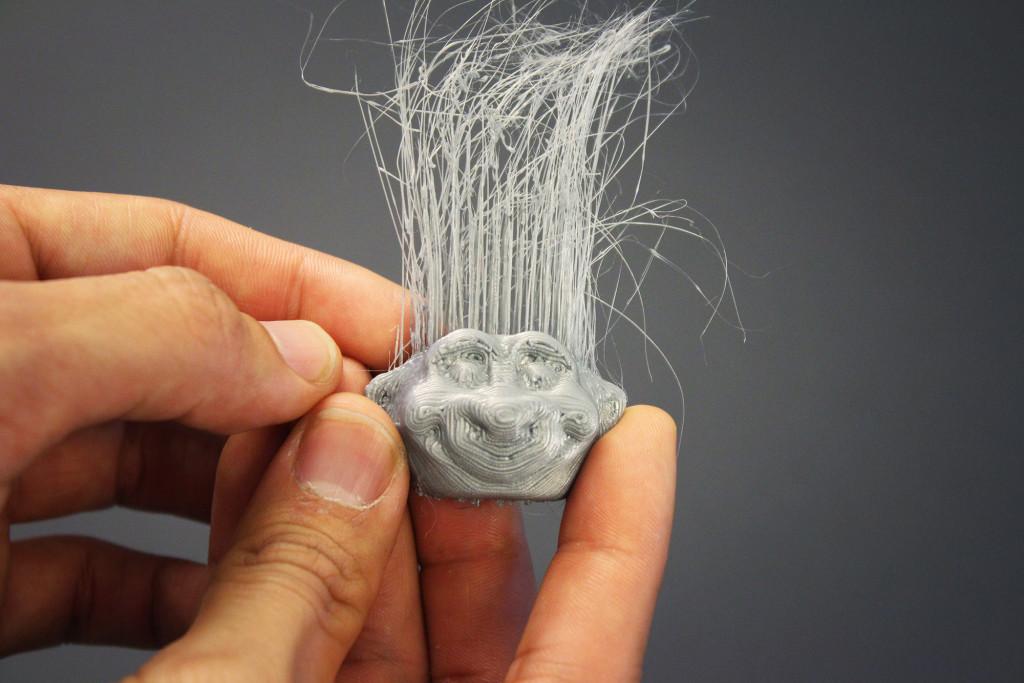Whether it’s an afro, a sleek ponytail, an updo, or a mess of trendy dreadlocks, the different ways in which we all present our locks, manes, and mops are infinite. Hair is more than just those threadlike strands sprouting from follicles all over our bodies. For many it’s a representation of personality, confidence, youth–and even freedom. Spanning much further than just our furry bods, hair, both natural and artificial, has a multitude of uses, from the offbeat to the utilitarian–to but of course, the 3D printed.
Often, some of the most unique innovations are created after a single spark of inspiration hits, seeing one small thing that looks like something else. In the case of a group of researchers at Carnegie Mellon, they were inspired to make ‘hair’ by observing the single strands that sometimes trail behind the glue gun during the finishing of projects.
In quite a serious paper on the subject, they do also take a quick poke at their technique, referring to it as ‘furbication.’
“This technique extends the capabilities of 3D printing in a new and interesting way, without requiring any new hardware,” state the researchers in their paper, ‘3D Printed Hair: Fused Deposition Modeling of Soft Strands, Fibers and Bristles,’ recently published in UIST ’15.
Outlining their method for making strands, fibers, and bristles, the team points out how they were able to exploit the glue gun string phenomenon, working with similar principles in 3D printing. Users should, according to the researchers, find ‘furbication’ easy to replicate and also work into current 3D printing practices. Users can simply designate to the 3D printer via G-code where they want hair to go in a model, as well as how long, thick, and dense it should be.
The team of researchers used PLA filament with an unmodified 3D printer in the form of an assembled Printrbot’s Simple Maker’s Kit, for which they report having spent around $350. The basic technique consists of growing the hair by extruding bits of the filament and then quickly drawing the extruder away, making the same original stringing effect seen with the glue gun. They report that this routine can be programmed into G-code so that the hair will be fabricated over and over, and with the correct specifications. With different filaments, of course, a variety of colors can even be produced.
- Wizard – featuring a long beard with dense, straight medium hair
- Brush – using straight, stiff bristles
- Troll – showing off a head of long ‘crazy hair’
- Horse tail – long fine hair which can be braided or shaped
- Fingers- hair is short and curly; blown dry to achieve desired effect
While we certainly don’t see this putting Rogaine out of business anytime soon, being able to add hair where it’s needed whether for a 3D printed figurine or a tool with bristles certainly takes care of one more detailing and post-processing facet–not to mention it just looks like fun to try. So, now–yeah, you–drop the glue gun and get to work on your knuckle hair! What are your thoughts on these methods of printing. Discuss in the 3D Printed Hair forum thread on 3DPB.com.
The Carnegie Mellon researchers will present their research on November 11th at the UIST 2015 symposium in Charlotte, NC.

